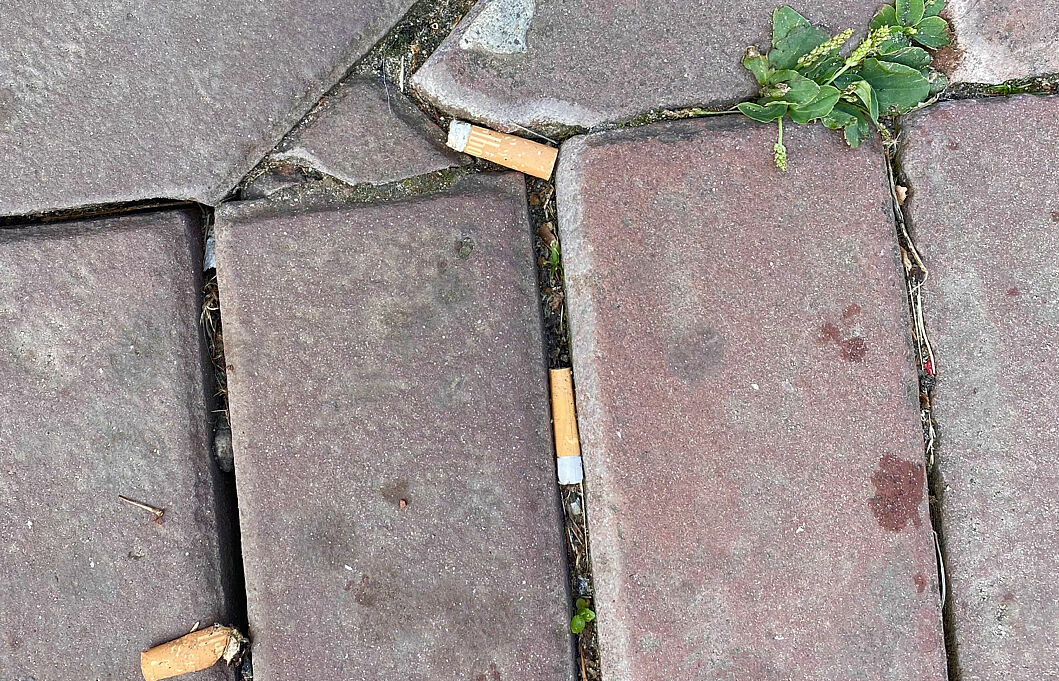Cigarette butts are the most frequently discarded waste product worldwide.
When the filters are washed out, for example by rainwater, thousands of chemicals can be released. A single cigarette butt can contaminate up to 40 litres of groundwater. The WHO speaks of up to 7,000 substances in corresponding sun and weather conditions. The filters are made of the plastic cellulose acetate and it can take up to 15 years for them to decompose, depending on the external environment.
The cigarette butts even seem to have arrived in the Arctic ice. Researchers have found tiny cellulose acetate particles there.
That's why cigarette butts will be collected on the HHU campus for a week until Sustainability Day. On HHU Sustainability Day on 5th July, the collected cigarette butts can be handed in at the @rhinecleanup stand. There is equipment in the HCSD to join in and registration is possible here.


